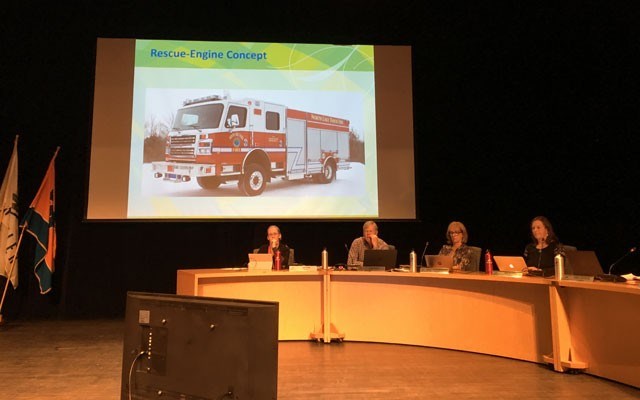Fire season may be over, but prep work for future years — including fuel thinning and upgrading equipment — continues.
After conducting an analysis of its needs in 2016, the Whistler Fire Rescue Service (WFRS) determined it would need a new rescue engine to stay compliant with Fire Underwriters Survey (FUS) requirements.
At 23 years old, the WFRS' Engine 3 is past its rated life, "so at this point, in order to maintain our ratings, we need to replace that vehicle," explained WFRS Chief Geoff Playfair in a presentation to council on Oct. 17.
At the meeting, council authorized staff to purchase a new rescue engine at a total cost of $874,126.84 USD (about $1,099,071.58 CDN).
Money for the new engine has been reviewed by the municipal finance and audit committee and will be included in the 2018-2022 financial plan.
Cost of replacement will be funded from the Resort Municipality of Whistler (RMOW) vehicle replacement reserve via annual contributions of $54,953.58.
The old engine will be auctioned off, with about $40,000 expected to be added to the reserve.
A review of fire services conducted in 2015 recommended, among other things, closing Fire Hall 2 (located at 8900 Highway 99).
Doing so would allow for easier integration and training of staff, as well as ensure a better distribution of calls among staff, Playfair said at the time.
But the 2016 needs analysis, conducted by Dave Mitchell and Associates, found that closing Hall 2 would "significantly increase the number of properties that would not be considered protected by FUS."
The number of structure fires in the Hall 2 area is also increasing, while staying flat or declining around Halls 1 and 3, the analysis found.
The analysis concluded that the primary response vehicle for each hall should be an Engine rather than a Quint, particularly for single-vehicle responses, as Engines allow the WFRS to perform technical rescues in addition to firefighting.
"We're experiencing a lot of costs with maintaining the Quints on the road," Playfair said.
"They're heavy vehicles, and there's a lot of wear and tear on them when you're using them as a daily response vehicle."
The Quints should be maintained for structure fires and certain rescue calls, the analysis found, but with an Engine as the primary response vehicle the WFRS may also achieve a slightly faster response time.
Also at the Oct. 17 meeting, council supported two Union of BC Municipalities wildfire prevention initiative grant applications.
UBCM's wildfire management funding is broken down into two categories: Fuel Management Prescriptions (how the forest will be treated to reduce risk) and Operational Fuel Treatment (the physical tree-thinning work).
For prescriptions, applicants pay 25 per cent of the total cost, while in the case of treatment UBCM contributes up to $20,000 per hectare.
The first application seeks $13,260 (with the RMOW pitching in the remaining $4,420) to support prescription work on 82 hectares near the Rainbow subdivision, with the thinning work to be completed in 2019 if successful.
The second requests $360,000 (with the RMOW share being $230,000) and deals with fuel treatment on 18 hectares near Kadenwood.
In 2017, the RMOW completed a fuel-thinning project in Brio and has more scheduled for Alpine Meadows, the Callaghan Forest Service Road and near the cemetery this month and next.
Before thinning work starts, the RMOW posts notices on its website, social media, and in some cases via targeted letters to neighbouring landowners.




